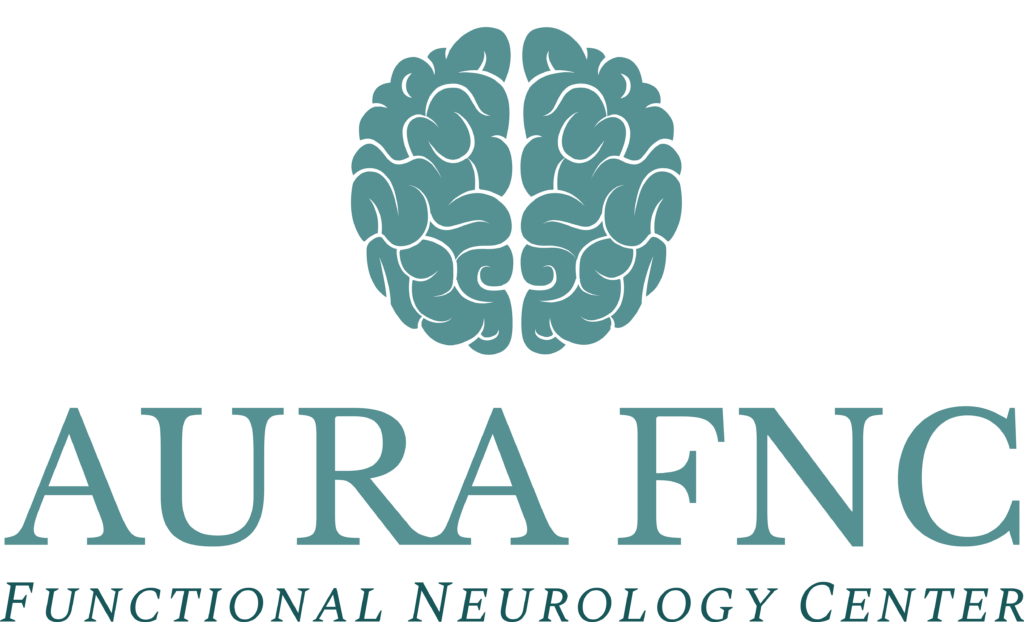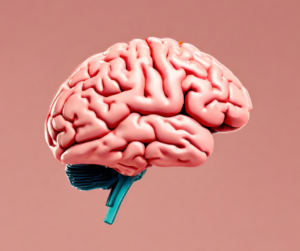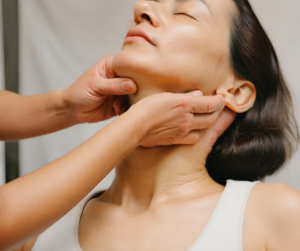Explore the differences between migraines and tension headaches. Learn about symptoms, triggers, and treatment options in this comprehensive guide by Dr. Diana Tyler.

Dr. Diana Tyler DC, DACNB
Founder of Aura Functional Neurology Center. Board Certified Chiropractic Neurologist and migraine specialist. Graduate of Palmer College of Chiropractic and Diplomate of the American Chiropractic Neurology Board.
Explore the differences between migraines and tension headaches. Learn about symptoms, triggers, and treatment options in this comprehensive guide by Dr. Tyler.
Definition of Migraine and Tension Headache
Migraine headaches and tension headaches are two common types of primary headaches that many people experience. Migraines are typically characterized by intense pulsating or throbbing pain on one side of the head, often accompanied by sensitivity to light and sound, nausea, and sometimes visual disturbances such as blind spots or flashing lights. Tension headaches, on the other hand, are often described as a dull, constant ache or pressure that can be felt on both sides of the head. These headaches are usually caused by muscle tension in the neck and scalp and are not typically associated with other symptoms like nausea or sensitivity to light. While both types of headaches can cause discomfort and disrupt daily life, understanding their differences can help in finding the appropriate treatment and relief.
Understanding the distinctions between migraine and tension headaches.
Migraine and tension-type headaches are two common types of primary headaches that can significantly affect daily life. While they share some similarities in symptoms, there are distinctive differences between the two, especially when it comes to treatment.
Tension-type headaches are the most common type, affecting a large portion of Americans during their lifetime. They are characterized by a dull, aching pain that is usually felt on both sides of the head. These headaches typically do not involve visual disturbances, nausea, or vomiting. On the other hand, migraines are less common, affecting over 17% of females and 5% of males in the U.S. (Walter, 2022). Migraines are known for their intense, throbbing pain that is often accompanied by nausea, vomiting, and sensitivity to light and sound. This sensitivity to light, known as photophobia, is a common symptom of migraines but is usually absent in tension-type headaches.
Another distinguishable factor is the impact of physical activity on the pain. In the case of migraines, physical activity usually worsens the pain. Simple movements or exercises can intensify the throbbing sensation. However, for tension-type headaches, physical activity typically does not significantly impact the pain level. People with tension-type headaches may find relief or experience no change in pain when engaging in physical activities.
In summary, tension-type headaches are the most common type, affecting a large portion of the population. They lack the visual disturbances and sensitivity to light commonly associated with migraines. Additionally, physical activity generally does not worsen tension-type headaches. Understanding these differences can help individuals better identify and manage their specific type of headache.
References:
Walter K. What Is Migraine? JAMA. 2022;327(1):93. doi:10.1001/jama.2021.21857
Causes of Migraine vs. Tension Headache
Understanding the differences
Migraines and tension-type headaches have distinct causes that contribute to their onset. Migraines are believed to be triggered by changes in the brainstem and its interactions with the trigeminal nerve, a major pain pathway. These changes cause the blood vessels in the brain to enlarge, leading to the release of chemicals that can cause inflammation and further aggravate the pain. There are various triggers that can precipitate a migraine episode, including certain foods, hormonal changes, sensory stimuli, stress, and physical exertion.
On the other hand, tension-type headaches are primarily caused by muscle contractions and tension in the head and neck regions. This muscle tension can be the result of stress, anxiety, fatigue, poor posture, or even muscle strain. Unlike migraines, tension-type headaches typically do not involve the same underlying brainstem abnormalities or blood vessel changes. Instead, they are commonly associated with muscle tightness and the activation of pain-sensitive structures in the head and neck muscles. However, when tension headaches become chronic tension-type headaches, they can become difficult to manage due to brain-based maladaptation due to central sensitization.
By understanding the distinct causes of migraines and the development of chronic tension-type headaches, individuals can better manage and prevent these debilitating conditions. Identifying triggers and implementing effective coping strategies, such as stress management techniques, good posture practices, and relaxation exercises, can go a long way in reducing the frequency and intensity of both migraines and tension-type headaches.
Common Triggers for Migraine
Migraines can be triggered by a variety of factors, each unique to the individual experiencing them. Bright lights, such as sunlight or fluorescent lighting, can be a common trigger for migraines. The intense light can overstimulate the brain and lead to the onset of a migraine episode. Similarly, loud sounds, such as blaring music or noisy environments, can also be a trigger for migraines. Strong smells, such as perfumes or certain chemicals, can be overwhelming to those with migraines and can initiate a migraine attack and activate or increase headache symptoms.
Certain food additives have been linked to migraines as well. Monosodium glutamate (MSG), a flavor enhancer commonly found in processed foods, has been reported to trigger migraines in some individuals. Consumption of foods containing MSG can lead to the dilation of blood vessels in the brain, increasing the risk of a migraine episode.
Hormonal changes, particularly in women, can significantly contribute to the onset of migraines. Fluctuations in estrogen levels, such as during menstrual cycles or menopause, can trigger migraines in some women. These hormonal shifts can impact neurotransmitters and blood vessels in the brain, leading to the development of a migraine.
Overuse of medications, including over-the-counter pain relievers, can paradoxically lead to medication overuse headaches, which are a specific type of migraine. Regular and excessive use of pain medications can disrupt the normal functioning of the brain and trigger migraines.
Understanding these common triggers can help individuals with migraines identify and avoid them, potentially reducing the frequency and severity of migraine episodes. By managing these triggers, individuals can better navigate their day-to-day lives with fewer interruptions from debilitating migraine pain.
Risk Factors for Migraine
Migraines are complex neurological conditions that can be influenced by a variety of factors. Understanding the risk factors associated with migraines can help individuals identify potential triggers and take proactive measures to manage their condition.
Being female is a recognized risk factor for migraines, as women are three times more prone to experiencing migraines compared to men. The hormonal fluctuations during the menstrual cycle have been known to potentially trigger migraines in certain women. Estrogen is involved in migraine development, and women frequently experience an uptick in migraines during specific phases of their menstrual cycle.
Having a family history of migraines also increases an individual’s risk. Research has shown that genetics play a role in the development of migraines. If one or both parents suffer from migraines, the likelihood of experiencing migraines increases.
Mood disorders, such as depression and anxiety, have been linked to a higher prevalence of migraines. The relationship between migraines and mood disorders is bidirectional, meaning that one can trigger or exacerbate the other. The exact mechanism behind this association is still under investigation.
Sleep disorders, such as insomnia and sleep apnea, can also increase the risk of migraines. Lack of quality sleep can disrupt brain activity and trigger migraines. Additionally, sleep disturbances can exacerbate other migraine triggers, including stress and hormone imbalances.
Common Triggers for Tension Headache
Tension headaches are one of the most common types of headaches, and they can be triggered by a variety of factors. Stress is a major trigger for tension headaches. When we are under stress, our bodies can become tense, leading to muscle contractions and tightness in the neck and scalp, which can result in headache pain.
Another common trigger for tension headaches is a lack of sleep. When we don’t get enough sleep or have poor sleep quality, it can affect our overall well-being, including our ability to manage pain. Sleep deprivation can make us more sensitive to pain, increasing the likelihood of developing tension headaches.
Irregular meal schedules can also contribute to tension headaches. Skipping meals or going long periods without eating can cause a drop in blood sugar levels, leading to headaches. It is important to maintain a regular eating schedule to avoid this trigger.
Lifestyle changes such as sudden increases in physical activity or changes in work routine can also contribute to tension headaches. Overexertion and poor posture can strain the muscles in the neck and scalp, leading to headache pain.

Risk Factors for Tension Headache
Tension headaches can be triggered by a variety of risk factors, which can contribute to the development and intensity of these headaches. One common risk factor is sleep disturbances. Lack of sleep or poor sleep quality can disrupt our overall well-being, making us more susceptible to tension headaches. Sleep deprivation can heighten our sensitivity to pain, increasing the likelihood of experiencing these headaches.
Another risk factor associated with tension headaches is temporomandibular joint disorder (TMJ). TMJ refers to a condition where there is dysfunction or pain in the jaw joint and surrounding muscles. The tension and muscle imbalances in the jaw can lead to headaches, particularly in the temples or behind the eyes.
Neck pain can also be a contributing factor to tension headaches. Muscle tension and strain in the neck can radiate pain to the head, resulting in headaches. Poor posture, injury, or stress can all contribute to the development of neck pain and subsequent tension headaches.
Eye strain is another risk factor that can trigger tension headaches. Prolonged or excessive use of digital devices, reading for long periods, or straining to see can cause eye fatigue and muscular tension, leading to headaches.
Lastly, stress is a well-known risk factor for tension headaches. However, it is important to note that stress is not the sole explanation for these headaches, and other factors may also contribute or trigger them.
To effectively manage tension headaches, it is important to identify and address these risk factors. This may involve improving sleep habits, seeking treatment for TMJ disorders, practicing good posture and neck exercises, taking breaks to rest the eyes, and implementing stress management techniques. By addressing these risk factors, individuals can reduce the frequency and severity of tension headaches.
Symptoms of Migraine vs. Tension Headache
Migraine and tension headaches are two common types of primary headaches that can cause significant discomfort. While they may share some similarities in terms of head pain, they also have distinct symptoms that set them apart. Migraine symptoms are often characterized by intense pulsating or throbbing head pain, typically on one side. They are commonly accompanied by other symptoms such as nausea, vomiting, sensitivity to light and sound, visual disturbances like blind spots or flashing lights, or sensory changes like tingling. In contrast, episodic tension-type headaches typically present as a dull, aching pain that can affect both sides of the head. There may be a sensation of pressure or tightness around the forehead or the back of the head. Unlike migraines, tension headaches do not typically involve the same level of sensitivity to light or sound, nor are they typically associated with visual disturbances. By understanding the differences in symptoms between these two types of headaches, individuals can better identify and manage their pain.
Symptoms of a Migraine Attack
A migraine attack is a debilitating headache that is often accompanied by other symptoms. There are several common types of migraines, including migraine with aura, migraine without aura, and even silent migraine (where no headache phase exists).
During a migraine attack, the pain is usually moderate to severe and can last anywhere from a few hours to several days. The location of the pain varies, but it is typically on one side of the head and can pulsate or throb. For some felt more in the frontal region and near the eye, for others in the back of the neck on one side (in the suboccipital region).
In addition to the head pain, people experiencing a migraine attack may also experience other symptoms. Nausea and vomiting are common, along with sensitivity to light, sound, or smell. This sensitivity, known as photophobia, phonophobia, and osmophobia respectively, can be so severe that even normal light, noise, or odors can be overwhelming. A headache diary can be an effective way to track your symptoms.
It’s important to note that not all migraines are the same, and the symptoms can vary from person to person. Some individuals may experience visual disturbances, such as blind spots or flashing lights, before the onset of the headache. These symptoms, known as aura, can last anywhere from a few minutes to an hour. Others may experience symptoms before the headache phase, such as fatigue, irritability, depression, or food cravings.

Duration of a Migraine Attack
The duration of a migraine attack can vary greatly from person to person. These attacks can last anywhere from a few hours to several days, with the average duration typically falling between 4 and 72 hours.
Numerous factors can influence the length of a migraine attack. The severity of the pain can play a role, as more intense migraines tend to last longer. Additionally, the effectiveness of treatment can impact how long an attack lasts. If a person is able to quickly find relief through medication or other holistic methods, the attack may be shortened. On the other hand, if treatment is delayed or ineffective, the attack may persist for a longer period of time.
Individual differences also come into play when considering the duration of a migraine attack. Some individuals may be more prone to longer attacks due to their unique physiological or genetic makeup. Others may experience shorter migraines based on the specific triggers that affect them.
When migraines occur more than 15 times per month, they become chronic migraines.
It is important to remember that every migraine sufferer is different, and their experiences may not align with these general guidelines. That is because migraine disease can act alone or also feed off secondary headaches and associated conditions like Dysautonomia and POTS, they require different multifactorial treatment plans. If you are experiencing prolonged or severe migraine attacks, it is always best to consult with a healthcare professional for proper diagnosis and treatment.
Pain Location in a Migraine Attack
During a migraine attack, the location of pain can vary from person to person. However, on a regular basis, it is commonly described as moderate to severe and is often localized to one side of the head. This means that individuals may experience pain on either the right or left side, but not both simultaneously. Often there tends to be a favored side, especially when dealing with chronic migraine, as the brain can build negative plasticity from repeated attacks.
The pain can manifest in different areas, with many people reporting discomfort around the eye or temple, or the back of the head on one side. This can contribute to a throbbing or pulsating sensation that intensifies with physical activity or movement because each step can feel like a painful heartbeat in the brain.
In addition to the pain, individuals may also experience other symptoms during a migraine attack. Nausea is a common occurrence, and some individuals may even vomit. Sensitivity to light, sounds, and smells is also prevalent, with bright lights, loud noises, and strong odors exacerbating the symptoms.
It is important to note that each person’s experience with migraines can vary, and some individuals may not experience all of these symptoms. However, understanding the typical pain location and associated symptoms can help in identifying and managing migraines effectively.
Symptoms of a Tension-Type Headache
The location of pain in tension-type headaches is usually experienced on both sides of the head. Individuals may describe a dull, achy pain that may be present in the forehead, temples, or the back of the head. Tightness or pressure around the forehead is also a common symptom of tension-type headaches.
In addition to the headache itself, individuals with tension-type headaches may experience muscle tenderness in the scalp, neck, or shoulders. This muscle tenderness can contribute to the overall discomfort and may be triggered or worsened by activities such as computer work or physical stress.
Unlike migraines, tension-type headaches do not typically cause nausea or vomiting. Sensitivity to light, sounds, or smells is also less common. Instead, individuals with tension-type headaches often describe a more constant and steady pain without the throbbing or pulsating sensation often associated with migraines.
It is important to note that the absence of accompanying symptoms in tension-type headaches can help differentiate them from migraines.
Duration of a Tension-Type Headache
The duration of a tension-type headache can vary depending on the individual and the specific type of headache. Tension-type headaches can be categorized into episodic headaches, which occur on a less frequent basis, and chronic headaches, which are experienced more frequently.
Episodic tension-type headaches typically last from 30 minutes to a few hours, although they can sometimes persist for a couple of days. The severity of the headache may also vary throughout the day, with some individuals experiencing more intense pain in the morning or evening.
In contrast, chronic tension-type headaches can last for extended periods of time and may occur on a daily or near-daily basis. These headaches can persist for hours or even days on end, causing significant discomfort and impacting daily functioning.
The duration of tension-type headaches can be influenced by various factors. Stress, anxiety, lack of sleep, and poor posture are common triggers that can prolong the duration of these headaches. Additionally, certain activities such as prolonged computer use or physical exertion may exacerbate tension-type headaches and prolong their duration.
Pain Location in a Tension-Type Headache
When it comes to tension-type headaches, the location of the pain is typically described as affecting both sides of the head. Unlike migraines, which can be one-sided, tension headaches have a more bilateral nature.
The pain of a tension-type headache often comes on slowly, gradually intensifying over time. Many individuals describe this pain as feeling like a tight band or vice around the head, creating a sensation of pressure or squeezing. This sensation can encompass the entire head or be more concentrated in specific areas, such as the temples or the back of the head.
Tension-type headaches can present as a continuous headache lasting for hours or even days, causing persistent discomfort. Alternatively, they can occur episodically with varying frequency, with periods of relief interspersed between headache episodes. It can vary from a steady ache to reports of severe head pain.
One notable distinction between tension-type headaches and migraines is the absence of certain symptoms. Tension headaches do not typically cause nausea, vomiting, or sensitivity to light, which are common features of migraines. However, individuals with tension headaches may still experience sensitivity to sound or mild sensitivity to noise especially if their headaches are triggered by head injury such as post-concussion syndrome.
In summary, tension-type headaches are characterized by pain locations on both sides of the head, often described as a tight band or vice. They can present as either continuous headaches or occur episodically, but they do not typically cause nausea or sensitivity to light as migraines do. If your symptoms meet the criteria of migraine and tension headache, it is important to find out of you have any family history of migraine.
Diagnosis and Treatment Options
Diagnosing and treating migraines and tension headaches is crucial for individuals experiencing regular headaches. Seeking medical help is important to accurately diagnose the type of headache and understand its triggers, leading to effective pain management and prevention.
To diagnose migraines and tension headaches, a functional neurologist typically assesses the individual’s medical history, and symptoms, and conducts a physical examination and neurological examination. They may also order imaging tests or refer the patient to a specialist for further evaluation to co-manage associated conditions.
Once the type of headache is identified, appropriate treatment options can be recommended. For tension headaches, lifestyle changes, including stress management techniques, regular exercise, and proper sleep habits, can help reduce the frequency and intensity of headaches. Applying passive and active therapies to treat the head and neck, practicing relaxation techniques, and improving posture and muscle imbalance can also provide relief.
Migraine treatment options may include lifestyle modifications, brain training, and structural considerations. Avoiding triggers such as certain foods, bright lights, or strong smells can help prevent migraine episodes. Natural pain relievers and anti-inflammatories, such as ice or turmeric, can alleviate mild migraines. For moderate to severe pain, neuromodulation devices, Rezzimax Pain Tuner, and Hyperbaric Oxygen Therapy are used for the management of migraines may be prescribed.
Overall, understanding the type of headache through proper diagnosis and seeking medical help is essential in managing and preventing regular headaches. Effective treatment options, including lifestyle changes, home remedies, and medications, can significantly improve the quality of life for individuals experiencing migraines and tension headaches.







